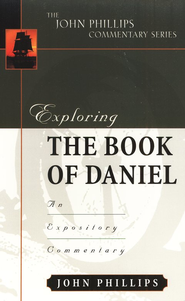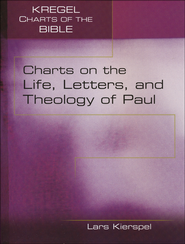After expressing his thanksgiving for God and these
believers, Paul proceeds to his petitions for these believers. He gives us the
substance of the prayer which he only referred to in v. 3-4. Like the other prayers
of Paul (Ephesians 1:17-23; 3:14-21; Colossians 1:9-14), it gives us good
insight into the Paul’s desire for believers.
As we look at the prayer we notice it falls in three parts:
The Request (Phil. 1:9)
“I pray that…”
denotes the object of Paul’s prayer. The word “that” indicates, identifies, and
points to the subject of the prayer: “your
love may abound still more and more in real knowledge and all discernment.” This is a request for maturity, which entails
abounding love, knowledge, and discernment. Notice these three are essential
and work together: To have love alone leads to emotionalism; Knowledge without
love leads to pride; discernment is empty and uncontrolled without love and
knowledge. All three elements must be
present in a Christian, if he is to have a balanced maturity. A balanced
maturity will help us avoid two temptations that confront every believer: First
the danger of living merely on experience and feelings. Second, is
intellectualism, becoming academic in our study of the Word. To avoid these we
must be balanced in love, knowledge, and discernment. Without these one becomes
unbalanced in life, which leads to and is a sign of immaturity.
The love spoken of here is not simply natural love. It is
the love of God which comes by an infilling and indwelling of the Holy Spirit
(Romans 5:5). The believer has the love of God implanted in him. We are to walk
in love (Eph. 5:2), imitating God (Eph. 5:1), who is characterized by love (1
John 4:3). Like God’s love who’s object is the world of mankind (John 3:16;
Rom. 5:8), likewise our love is to be directed toward men (Rom. 13:10; 1 Cor.
4:21; 2 Cor. 2:4, 8; Gal. 5:13; Eph. 1:15; 4:2).
This love is to abound. The word is perisseuo in the Greek,
meaning over and above, abundantly, or overflowing bounds. This is one of
Paul’s favorite words, using it 16 times. He wants the believer to abound in
faith (Rom. 15:13); faith, utterance, knowledge, earnestness, and gracious work
(2 Cor. 8:7); also in comfort (2 Cor. 1:4-5); thanksgiving (2 Cor. 4:15);
generosity (2 Cor. 8:2), and of course every good work (2 Cor. 9:8). Yet, he
reminds us that our ever-increasing love is to be a discriminating love. It is
to be controlled by two things:
[1] Knowledge.
“True love does not act in ignorance,” observes Gromacki.[1]
Love is to be directed or controlled by knowledge. Epignosis, used in the Greek text, denotes
exact or full knowledge. It describes
the type knowledge. It indicates a
“comprehensive sense of knowing God through Christ in an intimate way.”[2] It is knowledge that The Holy Spirit gives,
and the Apostle prays for it. We are to “be filled with the knowledge of His
will in all wisdom and spiritual understanding” (Col. 1:9).
[2] Discernment.
Spiritual knowledge must be tied and lead to spiritual discernment. The Greek
word is aesthesis, which means understanding, judgment, or perception. It
denotes the practical outworking of the knowledge we have, and not simply
factual knowledge. It is perception with the mind and the senses. It involves
knowledge grounded by experience. Without discernment we are not able to
discern between what is good and evil; what is false and true; and what are
incorrect or correct actions. Love needs these controls lest it harms rather
than blesses.
The Reason (Phil. 1:10a)
The reason they need discriminating love controlled by a
discerning knowledge is “so that you may approve the things that are
excellent.” The phrase starts with the Greek word eis, a preposition of reason.
It denotes the reason of the preceding action. It is so one can examine things.
The Greek word dokimazo means to test, or assay, and denotes approval after
testing. It indicates testing to see what is genuine. The word excellent comes
from a word that means to carry two ways, thus to carry different ways, or to
differ.[3]
Thus, the literal translation of the phrase is to “test the things that
differ.” This is needed because it is not always easy to distinguish between
the true and the counterfeit. The verb points to the results of the examination
and to accept it as approved.[4] It
speaks of choosing what is true and vital. This is true concerning doctrine,
ethics, and life. Notice that is a continual process for the believer, and
indicated by the present participle. Thus, it speaks of continual analysis on
our part to know what is excellent between things that are true and
counterfeit; virtue and vice; primary and secondary; spiritual and carnal; and
eternal and temporal in the choices we are to make. The process of testing
implies enablement to recognize what is approved and make choices wisely.
The Purpose (Phil 1:10b-11).
The Greek word hina indicates purpose or intended results
and should be translated “in order that.”
The purpose of discriminating love and discerning knowledge that enables
us to test the things that differ is “in order to” reach certain goals. These
goals are described by three adjectives. These adjectives describe our
sanctification, not our position. While we may have aspects of these because of
our position in Christ, the object of Paul’s prayer is our practice.
[1] Sincere. The word sincere means pure,
spotless, unmixed, and well established that has the sense of moral purity in
the biblical world. The word is derived from the compound words which has the
sense of being “tested by the light of the sun.”[5] It
pictures holding up to the sunlight to see if there are cracks in pottery or
spots on clothes. Dealers in pottery often filled cracks in pots with wax and
so one would hold it up to the sun to reveal the flaws because wax would allow
sunlight to penetrate and be seen. It speaks of relationship to our own
character. Likewise, we should test the purity of our life by the light of the
Son.
[2] Blameless. The
word is aproskopoi, meaning to be without offense. It speaks of not causing
others to stumble (cf. 1 Cor. 10:32; Rom. 14:20-21), or not stumbling ourselves
(Acts 24:16). It carries the idea of being not worthy of blame. It speaks of
our relationship to others in not being offensive, or bringing down another. We
are not to be a rock in the path of another that causes him to stumble. At the
same time, we are to watch that we do not stumble on the path we walk.
[3] Filled with fruits
of righteousness. Righteous fruit come from a righteous root. Cf. 1 John
3:7. This is produced through Christ, in conjunction with the Holy Spirit (Gal.
5:22-23). We are to have the quality of the righteousness of Christ in a
practical way that others can see. O'Brien points out it is in the middle voice
translating it “bringing forth a full harvest” of righteousness.[6] It
is a quality we are to bring out in our life in addition to sincerity and
blamelessness.
The result of which is to bring glory and praise to God.
This is a fitting conclusion to Paul’s prayer, as it is our life. We are to do
all to the glory of God.


